A BIRTHDAY SALUTE: The celebrated Mr. K’s latest in a recurring series of great stories about folks connected to the comics world…
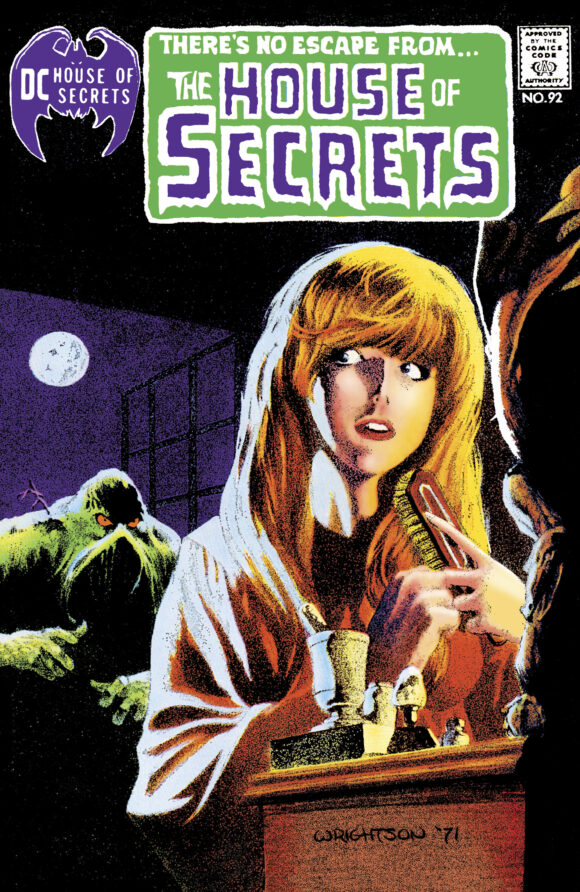
Joe Orlando was the first editor to shepherd Swamp Thing.
—
Welcome to columnist Paul Kupperberg’s recurring feature A COMIC MOMENT WITH… Having worked decades in the biz, Paul has so many great, humorous stories to tell, this seemed like a really groovy way to share some of them — especially on birthdays. This time out, it’s the late artist/writer/editor JOE ORLANDO! (UPDATED 4/4/24: This first ran in 2022 for Orlando’s birthday, which is today. He was born 97 years ago. — Dan)
—
By PAUL KUPPERBERG
Joe Orlando (April 4, 1927 – Dec. 23, 1998) was a comic book jack-of-all-trades, an artist who started with Treasure Chest Comics in 1949 and, by the age of 24, was a staff artist for Bill Gaines’ legendary EC Comics line and Mad Magazine. He later helped Jim Warren launch his Creepy and Eerie magazines as artist and story editor, wrote the Little Orphan Annie newspaper strip, and contributed covers and illustrations to National Lampoon, Newsweek, and The New York Times. Beginning in 1966, Joe became an editor, writer, artist, colorist and executive for DC Comics. He also was the artist behind the Sea Monkey ads that ran on the back cover of half the comic books published in the 1960s and 1970s.
Joe also had a wicked sense of humor, some might even call it “evil,” as I learned from our day-to-day and professional interactions at DC. Joe loved yanking your chain, and the more you reacted to his teasing, the more he teased. I saw this early on, working with him originally on “custom comics” assignments (specialty comics created for licensees of DC’s characters).
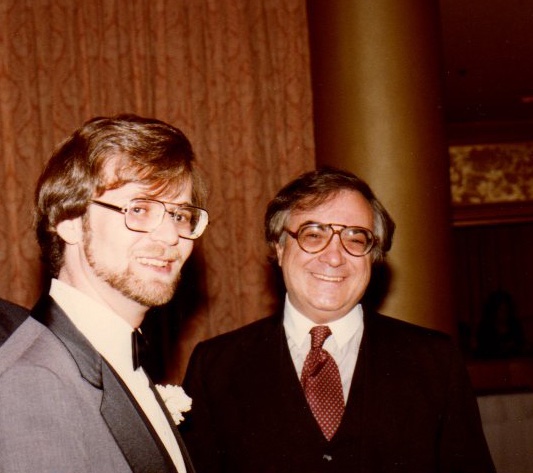
Joe (right) and me at Paul Levitz’s wedding in the early 1980s.
Having grown up under relentless teasing, I had developed a hard shell and gave back as good as he gave. Joe just wanted a reaction, and good or bad, it would usually provoke a big grin and a prolonged fit of giggling. Joe loved to laugh. A joke I once made about an office colleague (whose name and joke I will not repeat; it was cruel, and I regret making it) made Joe literally collapse to the floor. He had one assistant whose spine I could see stiffen whenever he had to go into Joe’s office, but the guy never broke. That drove Joe crazy.
In addition to some custom comics gigs, I also reported directly to Joe for a while when I was on staff in the early 1980s, and, in 1986, I got the assignment to write the third Super Powers miniseries. I had written the previous year’s mini for editor Andy Helfer (and artist Jack “You Heard Right!” Kirby) and Joe, wanting to pick up the story from where the last one left off, brought me in for the job. Joe wasn’t officially the book’s editor; he was the book’s editor’s supervisor but I don’t recall the editor of record as being present for the plotting session.
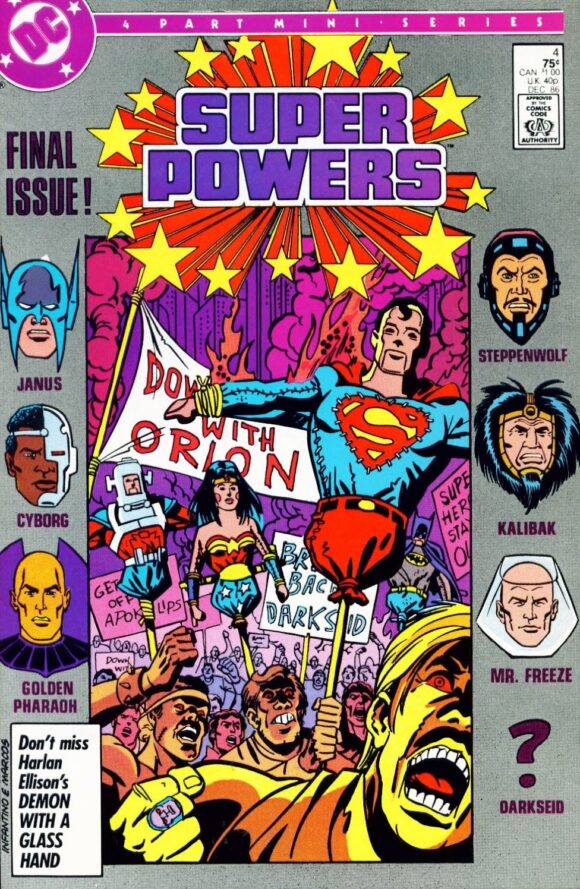
Plotting a four-issue miniseries (which Carmine Infantino and Pablo Marcos would draw, and Joe would color) with Joe was like running a marathon. He may not have known exactly where the story was headed, but he sure had a truckload of things he knew he wanted to get into before it got there. I would suggest something that Joe enthusiastically jumped on, sometimes making some small alterations, but always adding bits of business that popped into his mind, building on the scene. Joe was simultaneously fielding phone calls and dealing with everyone who appeared at his door with something to sign or a decision to make. But that was OK; those breaks gave me the chance to catch up on the notes I was furiously scribbling.
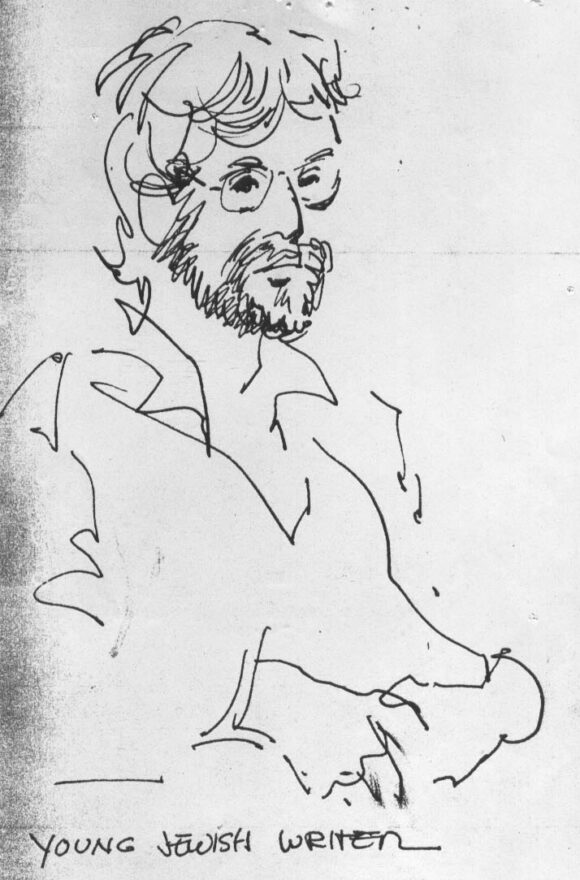
A sketch Joe made of me during that Super Powers plotting session.
Finally, after an hour or so, we had the overall story beats worked out and broken down into the four issues, and I said, “Now all I’ve got to go is figure out what to cut from the extra bits so I can make the story fit.”
“What do you mean, ‘cut’?” Joe said, sounding surprised.
“There’s like fifty pounds of story here that I’ve got to fit into a twenty-pound sack. Something has to go.”
“That’s great stuff. Leave it. You’ll make it work,” he said.
“With twelve-panel pages, maybe.”
“Stop whining and go write the script!”
“Carmine’s gonna kill us both!” I cried, a last-ditch effort to make Joe see reason.
Joe cracked up, cackling like a 4-year old who had just told a fart joke, and said, “I finally got you. You should’ve seen your face!”
I couldn’t see my face, but I could see his. It was worth getting punked for.
—
MORE
— PAUL KUPPERBERG: A Comic Moment With… DAVID V. REED. Click here.
— PAUL KUPPERBERG: A Comic Moment With… DON HECK. Click here.
—
Sure, you know Paul Kupperberg as the prolific writer of over a thousand comic books for such characters and series as Superman, Aquaman, Doom Patrol, Vigilante, Life with Archie, Bart Simpson, Scooby-Doo, and dozens more for DC Comics, Archie Comics, Bongo Comics, and others, and that he is also the creator of the series Arion, Lord of Atlantis, Checkmate and Takion, and is a former editor for DC, Weekly World News, and WWE Kids Magazine. But Paul is also the author of numerous books, including the superhero novel JSA: Ragnarok and the comics industry-based murder mystery, The Same Old Story, not to mention (but we will anyway) Paul Kupperberg’s Illustrated Guide to Writing Comics, I Never Write for the Money, But I Always Turn in the Manuscript for a Check, Direct Comments: Comic Book Creators in their Own Words, The Unpublished Comic Book Scripts of Paul Kupperberg and Son of the Unpublished Comic Book Scripts of Paul Kupperberg. You can follow Paul at PaulKupperberg.com and at Crazy8Press.com.
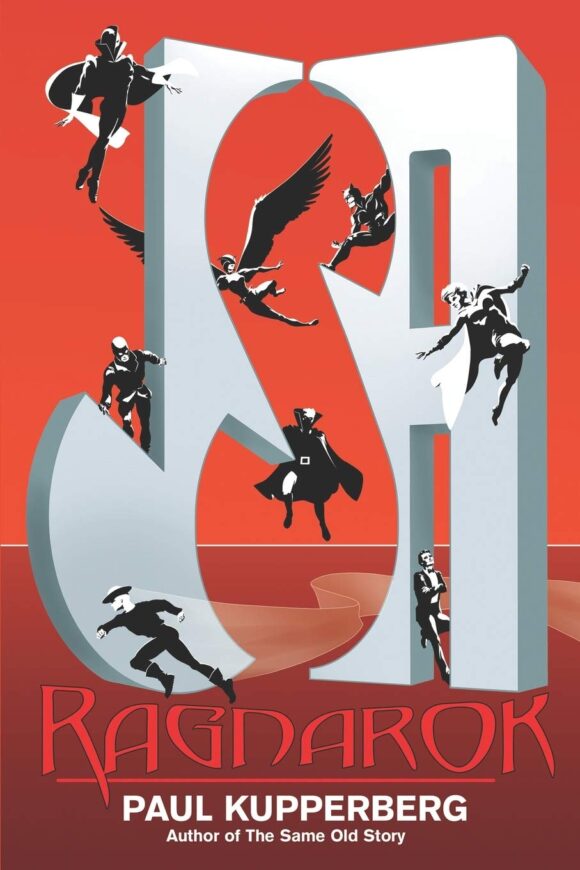

April 16, 2024
I just read those Joe Orlando Daredevil comics including DD#2 and they are great! The art in them are amazing and feel way ahead of their time. Especially the Purple Man first appearance and origin. I wish he had done the book for longer. I really want to read his 50s Western comics now.